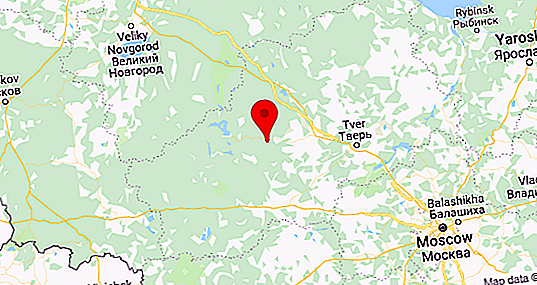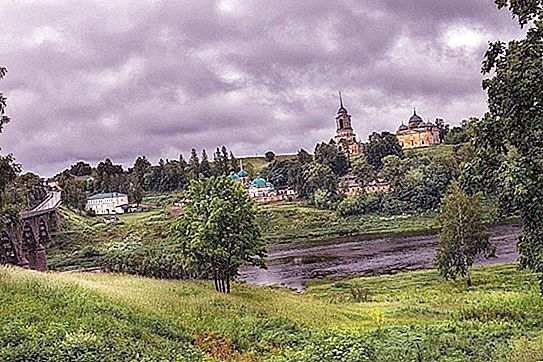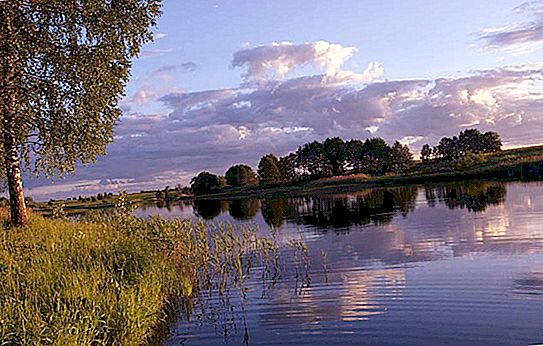Tver region is one of the constituent entities of the Russian Federation. It is located in the center (closer to the north) of the European territory of Russia, in the temperate zone, on the territory of the Middle Strip. It has a border with the Moscow, Smolensk, Yaroslavl, Vologda, Novgorod and Pskov regions. The area of the Tver region is 84.1 thousand km 2. And by this indicator it is one of the largest entities in our country. The climate of the Tver region is temperate, cool.

The territory receives a little solar radiation, which is associated with cloudiness and the northern location of this region. Significantly mitigates the climate of the Tver region, the relative proximity of the waters of the Atlantic. All this is reflected in the soil and vegetation cover.

The weather in the Tver region is unusually diverse. It varies both by season and by day.
Geography of the region
Tver region is located between the Novgorod and Moscow regions. Plain and elevated relief prevails in the west. There are few fossils. This is mainly peat and brown coal. Limestones are also common. There are underground fresh and mineral water resources.
Slightly more than half of the territory is covered by forests, mainly of mixed type, in places - broad-leaved.
Climate description
This subject of the Russian Federation is located in the zone of temperate continental climate and temperate climatic zone. Tver region is characterized by heterogeneous climatic conditions. The degree of continentality in its eastern half is higher than in the western. So, the average temperature in January in the south-west of this region is only -6 ° С, and in the northeast - -10 ° С. In July, the situation is the opposite - +17 and +19 degrees, respectively. Annual precipitation is about 650 mm. The average annual air temperature is from +2.7 to +4.1 ° С. The nature of the climate is something between those in the central, eastern and northwestern parts of the European territory of Russia.

In the form of rain 70% of all precipitation falls. 18% comes in the form of snow, and 12% in the mixed phase. The amount of precipitation varies from year to year.
Snow cover
A stable snow cover is formed at the end of November or the beginning of December and it remains on average until mid-April. In different years, snow melts at different times. From the beginning of March to the beginning of May. The greatest thickness of snow cover is observed in early February, when it is about 0.5 m. In the western part of the region, snow cover is more powerful than in the eastern part.
Features of the climate of the Tver region
The region’s climate is characterized by the presence of clearly defined seasons of the year and the frequent change of air masses. Arctic air can penetrate here from the north, Atlantic air from the west, tropical air from the south. Therefore, the weather is quite diverse. The main source of moisture is the Atlantic. For this reason, more precipitation falls on the western slopes of the hills than on the eastern. Their maximum occurs in the summer, and the minimum - at the end of winter and the beginning of spring.

Among the air masses, continental air of moderate latitudes prevails. In summer, its dominance causes warm weather with variable cloud cover, the absence of strong winds, and quite frequent thunderstorms in the daytime. In winter, such air creates moderately frosty weather with little repeatability of precipitation.
When Atlantic air masses enter the region, the weather is cool in the summer and quite warm, cloudy and humid in the winter.
The arrival of arctic air from the Barents and Kara Seas leads to severe frosts and clear weather in winter, night frosts in spring and cold (below 10 ° C), cloudy, but relatively dry, weather in summer.
Rarely does continental tropical air enter the region. This leads to an increase in temperature, snowmelt, early onset of vegetation and autumn "Indian summer." In summer, such masses cause hot (up to 30-35 ° C) weather, and with prolonged intake - drought.





